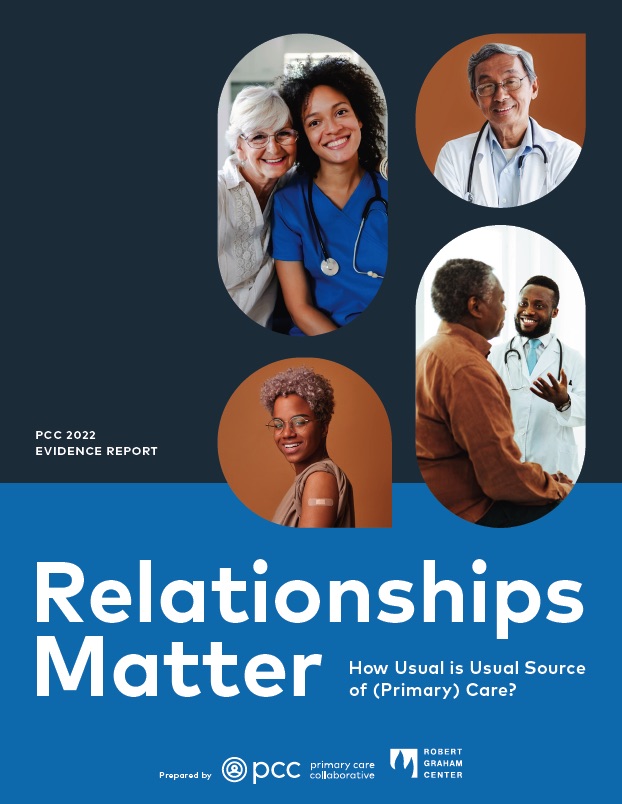This study evaluates individual- and community-level needs of housing (one of the SDOH domains) across the patient population of an academic medical center and explores how the level of housing needs impacts health care utilization.
You are looking at an archived version of our site. Please visit thepcc.org for a fresh, new experience!
Two Dozen Curated Articles to Shape Primary Care Policy and Practice
Welcome to PCC’s primary care research hub. This hub is a product of PCC’s Bridging the Gap in Primary Care Research project, which is designed to curate a small number of recent, seminal primary care articles and communicate them broadly. Our goal is to inform and shape the thinking of practice and policy leaders with respect to primary care clinical and health services research.
PCC has assembled this set of 24 primary care health services research (HSR) and primary care patient-centered outcomes research/comparative effectiveness research (clinical) articles through the work of a Research Dissemination Workgroup (RDWG) and our research partner, the North American Primary Care Research Group (NAPCRG). The PCC selected 12 clinical and 12 health services research articles for the final list.
The 24 articles can be filtered based on the Shared Principles of Primary Care, which characterize advanced primary care, and by article type. You can click on the Shared Principle icons next to each article to read more about each principle. Click on the title of the article to go to the full abstract and a link to the original publication. Some of the articles require an academic credential or paid subscription to the journal in which they were published. You can search for free, full-text versions of the articles using pubmed.
In addition to this central research hub page, selected articles will receive additional dissemination treatment through our quarterly Lunch and Learn discussions and other dissemination documents. You can access previous Lunch and Learn discussions and view the additional dissemination materials on the About the Project page.
The overall project is funded by a Patient-Centered Outcomes Research Institute Eugene Washington PCORI Engagement Award (19760-PCPCC).

Population Health Management | Ottobre 2022

Annals of Family Medicine | Ottobre 2022
The United States falls behind other industrialized nations on most health indicators1 and remains plagued by stark health disparities. Efforts to...

Annals of Internal Medicine | Luglio 2021
Prior studies have reported that greater numbers of primary care physicians (PCPs) per population are associated with reduced population mortality, but the effect of increasing PCP density in areas of low density is poorly understood. ...

Health Affairs | Maggio 2021
This study highlights how the growing trend of vertical integration, combined with differences in Medicare payment between hospitals and nonhospital providers, leads to higher Medicare spending.

Journal of General Internal Medicine | Marzo 2021
This article explores the shared principle of "comprehensiveness" and assesses the impact comprehensiveness has on medical expenditures and emergency department utilization.

Inquiry | Agosto 2020
Team-based care has emerged as a promising strategy for primary care practices to provide high-quality care. We examine changes in patient experience of care and recommended cancer screening rates associated with a primary care...

Geographic variation in overscreening for colorectal, cervical, and breast cancer among older adults
JAMA Network Open | Luglio 2020
National guidelines balance risks and benefits of population-level cancer screening among adults with average risk. Older adults are not recommended to receive routine screening, but many are overscreened. This study assesses the...

Family Practice | Giugno 2020
Recent aspirin trials have not shown similar benefits for primary prevention as older studies. This study compares benefits and harms of aspirin for primary prevention before and after widespread use of statins and colorectal cancer...

JAMA Network | Maggio 2020
Deprescribing of antihypertensive medications is recommended for some older patients with polypharmacy and multimorbidity when the benefits of continued treatment may not outweigh the harms. This study aimed to establish whether...

The Lancet | Gennaio 2020
Primary care patients with influenza-like illness treated with oseltamivir recovered one day sooner on average than those managed by usual care alone. Older, sicker patients with comorbidities and longer previous symptom duration...

Annals of Family Medicine | Gennaio 2020
Conventional clinic blood pressure (BP) measurements are routinely used for hypertension management and physician performance measures. We aimed to check home BP measurements after elevated conventional clinic BP measurements for which...
JAMA Internal Medicine | Febbraio 2019
What is the association between primary care physician density and population-level mortality?

Preventive Medicine | Gennaio 2019
Flexible sigmoidoscopy (FS) is the only cancer screening test to lower the risk of death compared to usual care in randomized controlled trials (RCTs). We hypothesize that this unique death reduction is more attributable to prevention...

Health Services Research | Dicembre 2018
This paper examines the association between medical home enrollment and receipt of recommended care for Medicaid beneficiaries with multiple chronic conditions (MCC).
JAMA Internal Medicine | Dicembre 2018
Addressing the social determinants of health has been difficult for health systems to operationalize. This article assesses a standardized intervention, Individualized Management for Patient-Centered Targets (IMPaCT), delivered by...

Family Medicine | Novembre 2018
This study indicates that the Pediatric Hurt-Insult-Threaten-Scream-Sex (PedHITSS) screening tool performs as well as the Conflict Tactics Scale: Parent-Child Version (CTSPC) screening measure (CTSPC) in identifying and differentiating...

Health Services Research | Novembre 2018
This study examines associations between clinics’ extent of patient-centered medical home (PCMH) implementation and improvements in chronic illness care quality. Veterans Health Administration primary care clinics with the most PCMH...
Annals of Family Medicine | Novembre 2018
Continuity of care is a defining characteristic of primary care associated with lower costs and improved health equity and care quality. However, we lack provider-level measures of primary care continuity amenable to value-based payment...

The Permanente Journal | Ottobre 2018
Lay health workers have been used to addressing patients' social determinants of health through resource referral and goal setting in targeted populations. However, we know of no studies that evaluate this type of role for a general...

Heart (BMJ Journal) | Agosto 2018
Heart failure (HF) often coexists in atrial fibrillation (AF) but is frequently unrecognized due to overlapping symptomatology. Furthermore, AF can cause elevated natriuretic peptide levels, impairing its diagnostic value for HF...

BMC Family Practice | Gennaio 2018
Primary and community care are key settings for the effective management of long term conditions. We aimed to evaluate the pattern of health outcomes in chronic disease management interventions for adults with physical health problems...

Journal of the American Board of Family Medicine | Gennaio 2018
Guidelines, policies, and warnings have been applied to reduce the use of medications for behavioral and psychological symptoms of dementia (BPSD). Because of rare dangerous side effects, antipsychotics have been singled out in these...

Health Affairs | Settembre 2017
Capitated payments in the form of fixed monthly payments to cover all of the costs associated with delivering primary care could encourage primary care practices to transform the way they deliver care.

JAMA Internal Medicine | Luglio 2017
Routine self-monitoring of blood glucose levels does not significantly improve hemoglobin A1c levels or health related quality of life for most patients with non–insulin-treated type 2 diabetes; patients and clinicians should...

Journal of the American Geriatrics Society | Febbraio 2017
This study identifies which individual- and context-related factors influence the translation into clinical practice interventions based on physical exercise (PE) as an adjunct to antidepressants (AD) for the treatment of late-life...

Journal of the American Board of Family Medicine | Luglio 2016
Childhood obesity has increased dramatically over several decades, and the American Academy of Pediatrics has recommended primary care practices as ideal sites for the identification, education, and implementation of therapeutic...

Curr Probl Pediatr Adolesc Health Care | Maggio 2016
These guidelines provide an overview of social determinants of health impacting children living in poverty and provide clinicians with practical screening tools and resources.

Health Affairs | Marzo 2016
Randomized controlled trials have demonstrated that the collaborative care model for depression in primary care is more effective than usual care, but little is known about the effectiveness of this approach in real-world settings. Our...

Journal of the American Board of Family Medicine | Gennaio 2016
In this study researchers tested the feasibility and acceptability of telephone-based nonprofessional patient navigation to promote linkages between the primary care physician office and community programs for patients with or at risk...
Lunch and Learns
What's New
Agosto 16, 2024
- Page 1
- ››











